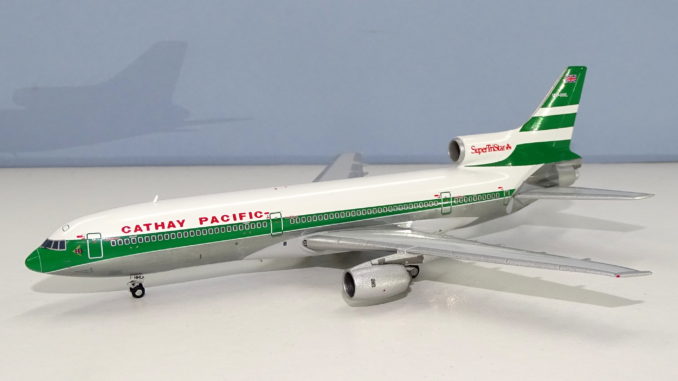
The Tristar in 1:400 has for years been the subject of campaigns to get new models made and like the 757 finally in 2018 it seems the type is about to get the attention it deserves. Having said that JC Wings actually announced a pair of Cathay Tristars back in 2017 and it has simply taken their usual leisurely pace for them to reach the market. With it seems both NG Models and maybe Aeroclassics working on a new Tristar mould it stands to be seen whether this new pair will be eclipsed by all new moulds.
THE REAL THING
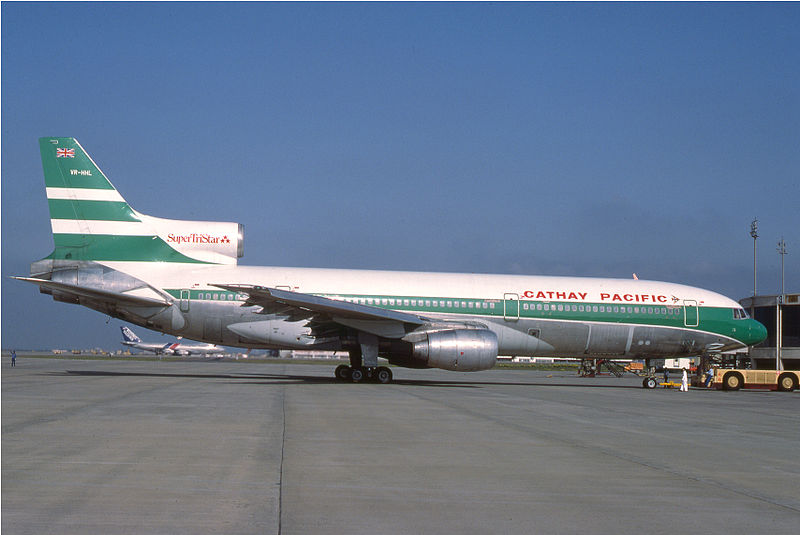
By clipperarctic (Cathay Pacific L1011) [CC BY-SA 2.0 (https://creativecommons.org/licenses/by-sa/2.0)], via Wikimedia Commons
By the 1970s was a decently sized and established Asian airline with a growing fleet of secondhand Boeing 707-320s gradually replacing the previous Convair 880s. Cathay was looking to expand but with both slot restrictions on many routes and competitors buying widebodies it needed to purchase larger equipment. Early in the acquisition programme the Boeing 747 was deemed too large, which left Cathay with a straight duel between the two trijets – the McDonnell Douglas DC-10 and the Lockheed L-1011 Tristar.
It seems that as with All Nippon’s purchase of Tristars political machinations came to the fore. Initially Cathay was leaning heavily towards the DC-10 but after the Board had accepted that recommendation intervention by the British Government with Cathay’s owners the Swire Group saw the decision reversed and the Tristar triumphant. The British Government was at the time desperate to support Rolls Royce who had almost gone bankrupt due to issues with the Tristar’s RB211 engines.

By John Wheatley [GFDL 1.2 (http://www.gnu.org/licenses/old-licenses/fdl-1.2.html) or GFDL 1.2 (http://www.gnu.org/licenses/old-licenses/fdl-1.2.html)], via Wikimedia Commons
Lockheed made a new offer to Cathay and in March 1974 Cathay ordered two new Tristars. These two frames, VR-HHK and VR-HHL, were delivered in August 1975 and were the only Tristars that Cathay bought new. They were also the newest Tristars that Cathay operated for although they eventually operated 21 Tristars in total, all of the 19 others were built prior to 1975.
Aircraft were gradually added to the fleet from other Tristar operators. A few came from Eastern and TWA in the 1970s along with a pair of ex Court Line birds but most of the fleet weren’t added until 1988/89 when aircraft were acquired from Guinness Peat Aviation and quite a few from the near bankrupt Eastern Airlines.
The Tristars flew a wide variety of regional routes from the Hong Kong base and by January 1994 19 remained in the fleet (although two were leased to Dragonair). The last aircraft left the fleet in October 1996 as Cathay began to take on Airbus A330s and more 747s.
THE MODEL
The format for my reviews is to split them into three key areas:
- The mould of the aircraft
- The paint and livery
- Printing and quality control
Each can get a maximum score of 10 for a section giving a maximum combined total score of 30.
THE MOULD
JC Wings technically have ownership of, or at least access to, the majority of the existing Tristar moulds including: the decent but dated, old Gemini Jets mould; the stubby and boxy, Blue Box mould; and the excellent but under-used Aviation400/Witty Wings mould. It is the Blue Box mould, that was used widely and ‘flooded’ the market with relatively sub-standard models, that has seen the L-1011 languish unloved for so long.
Back when I heard JC Wings were going to make a Cathay Tristar I lobbied them hard to make sure they used the best of the three moulds they had and thankfully they have done so and dusted off the Witty Wings mould. At the same time, they have tried to improve it by adding rolling gears and aerials.
Firstly, let’s look at the mould itself. It is excellent but had only gotten used 11 times before Witty went bankrupt and even then, they produced rather random models on it. The fuselage is very well made and one piece with no seams. The scallop intake under the nose is not detailed on the mould and perhaps the forehead of the cockpit is a little steep but overall it is a good effort.
Where the mould really works well is the tail where the graceful curve of the middle engine is brilliantly realized. In fact, it is the only full-length Tristar to have got the middle engine shape at all near correct. So, the original mould scores very well.

Unfortunately, the improvement of adding rolling gears, which necessitates completely new undercarriage, is anything but an improvement. The old mould had wheels that were slightly too small but they were on graceful thin undercarriage legs. This model has unsightly oversized tyres on chunky thick gear legs, which to add insult to injury are too short. JC Wings have a history of having oversized tyres (737) and too short undercarriage (A330, A350). At least because they haven’t modified the fuselage the gear legs are in the correct position (unlike their A320s and A330s). It is a major shame and mars what would otherwise be an excellent mould.
The message to JC Wings is rolling gears are not a must and ‘if it ain’t broke, don’t fix it’.
SCORE – 7
PAINT & LIVERY
The old Cathay scheme has become a real classic but only recently did I learn that it was known as the ‘Lettuce leaf sandwich’ scheme due to presumably the white and green tail stripes. I think I like it more knowing that fact. Anyway, it was replaced by the Brushwing scheme in the mid-90s and so no Tristars got repainted into the later livery.
That isn’t to say that Cathay Tristars didn’t wear several scheme variants however and this model wears the 2nd variation of the delivery colours version with ‘SuperTristar’ titles on the tail engine and the Union Jack resplendent on the tail top (but no anti-glare or black tipped nosecone). The first change was to move the Swire logo to next to the titles and out of the cheatline. The Swire logo itself was then simplified to just the flag element. Later Tristars lost both the ‘SuperTristar’ titles and the Union Jack although not necessarily at the same time (the titles went first and the Jack later). So there are 6 scheme variants and this model wears the second.
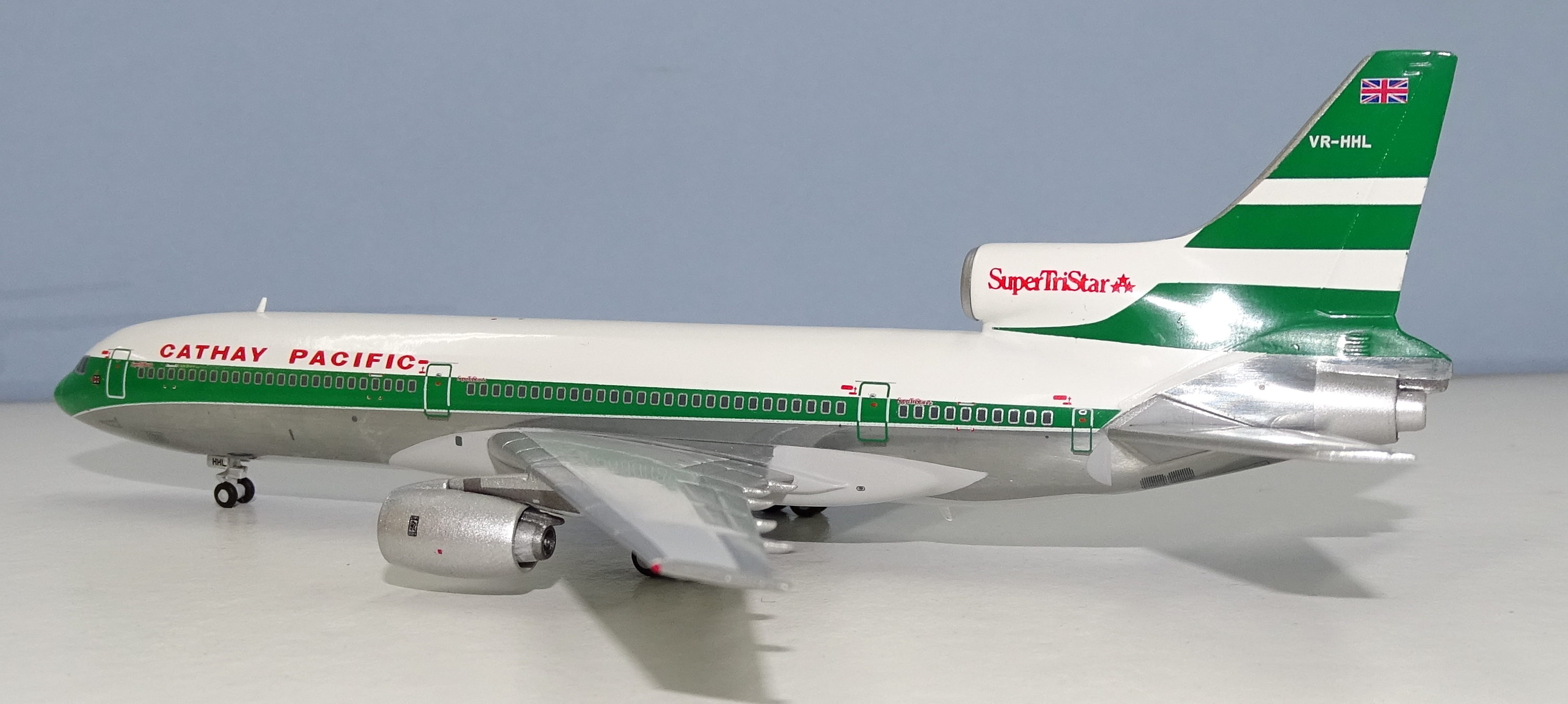
The scheme is essentially green, white and red. I have no complaints about the colours used. I do have some minor issues with the rest of the scheme though. Starting at the rear and the tail stripes are ok but the lower one seems wider at the rear than the front. It should of course not be. The ‘SuperTristar’ titles on the middle engine are ok but a little too thick which causes the letters to rather bunch together. This is most evident in the three stars which do not have enough white between them.
The thick green cheatline narrows correctly towards the nose and angles nicely down under the nosecone, however I think the white margin under it is too narrow. The main titles are good and the Swire flag logo, inside a golden arrow, and just behind the cockpit is also nicely done.
All of my criticisms with the livery rendition on this model are minor and not enough to lose it more than a single point.
SCORE – 9
PRINTING & QUALITY CONTROL
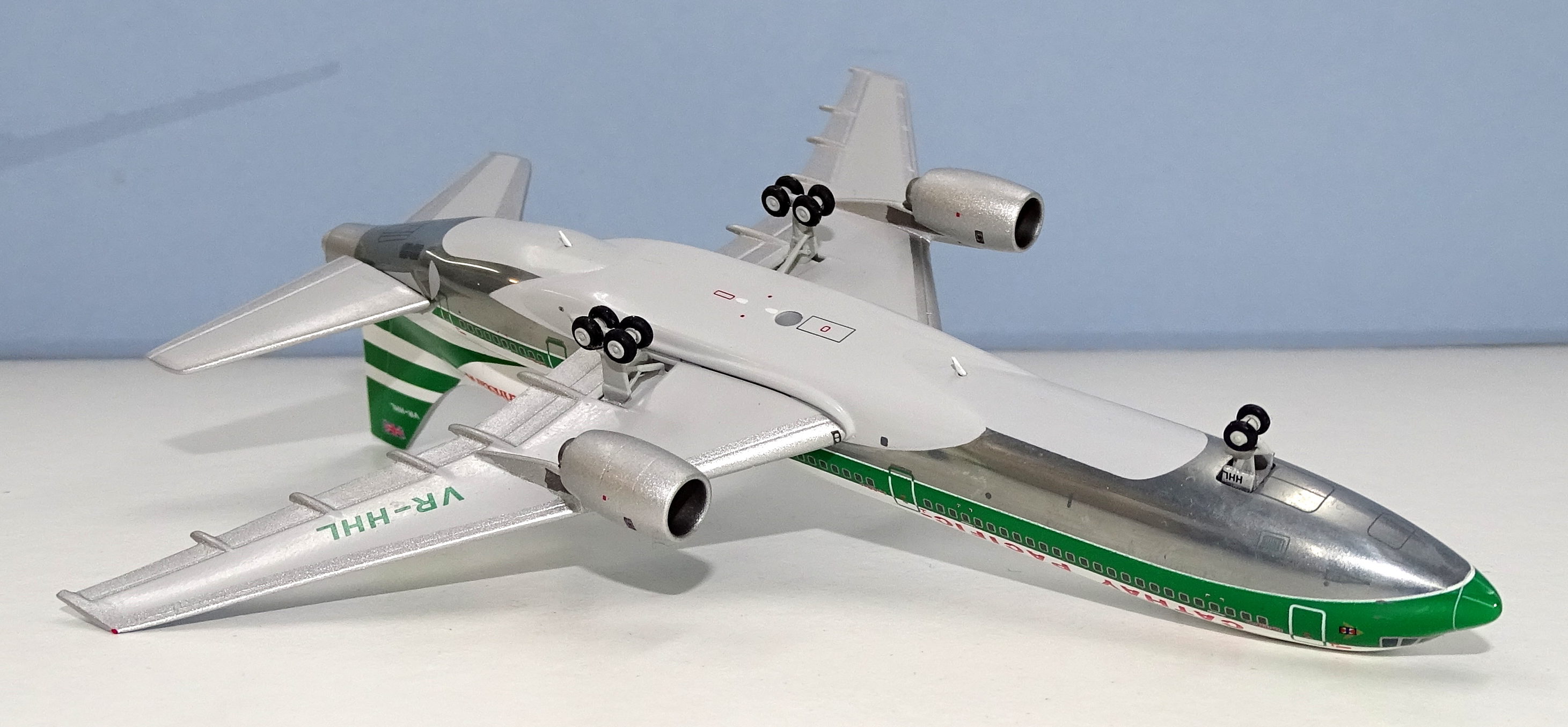
This model is crammed full of printing detail down to strong finishes on all the cargo hold doors, and the lower deck entry door forward of the wing on the starboard side. Sometimes I feel the markings are a little overdone. For example, there is a curious white wavy line above the main cargo door, which intrudes into the cheatline. I don’t know what it is but I can’t see it on any of the photos I have seen. Is it something that was really there? Not sure.

Generally, however the printing is good, although curiously the maingear doors on the underside are absent. There is one print area I’m not happy with and that is the cockpit windows. I can’t quite put my finger on it but they just seem off somehow, or at least the forward pair do anyway.
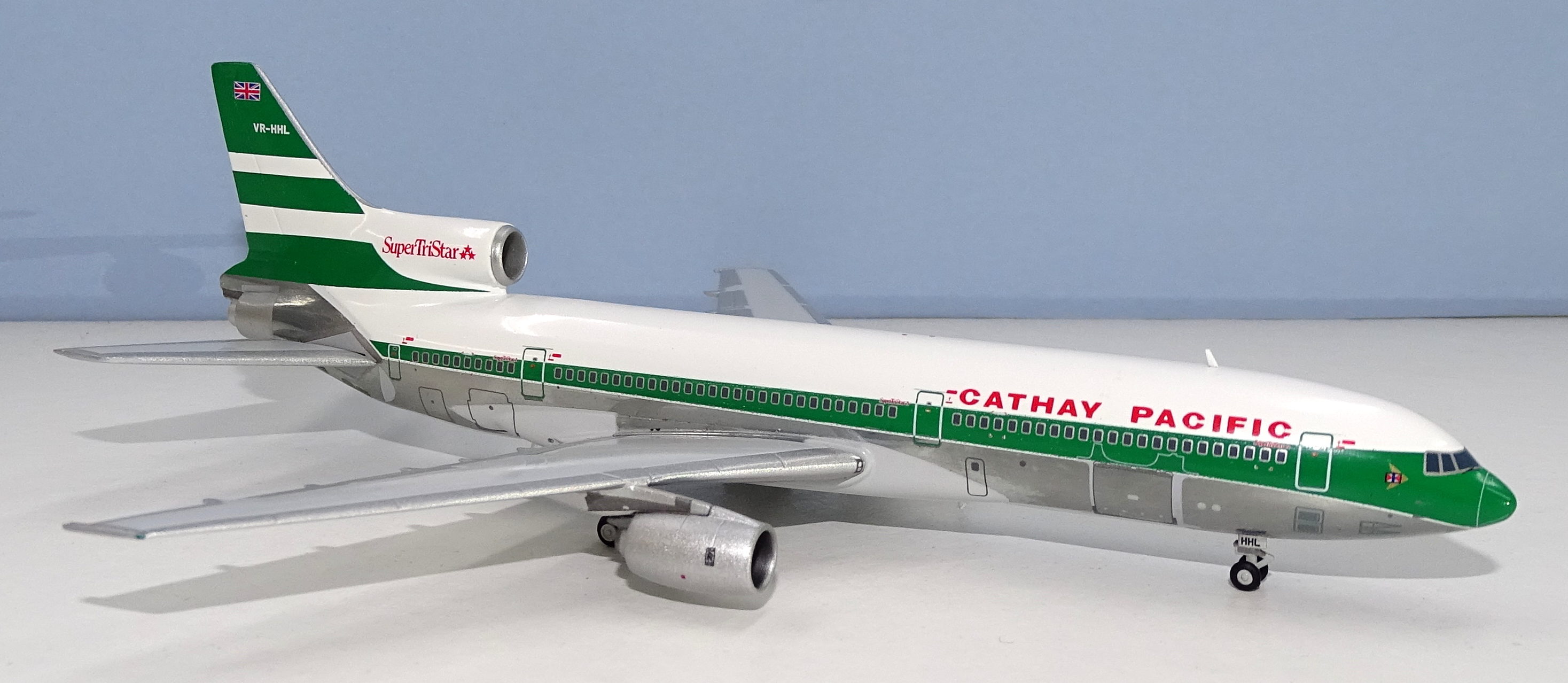
Build quality is very good, however after going to all the trouble of annoying me with the new landing gear the maingear tyres don’t even roll. So why did they bother at all I wonder?
SCORE – 8
CONCLUSION
I really want to like this model and I have been a cheerleader for this mould for a long time, however I am really struggling with it. JC Wings have grabbed defeat from the jaws of victory with the bloody awful new landing gear. There’s no way around it the new legs and tyres effectively ruin the look of the model. I will keep it, mainly because I haven’t got a replacement, but you can be guaranteed that if NG Models make a Cathay L-1011 this one will be up for sale quick as a flash.
FINAL SCORE – 24/30



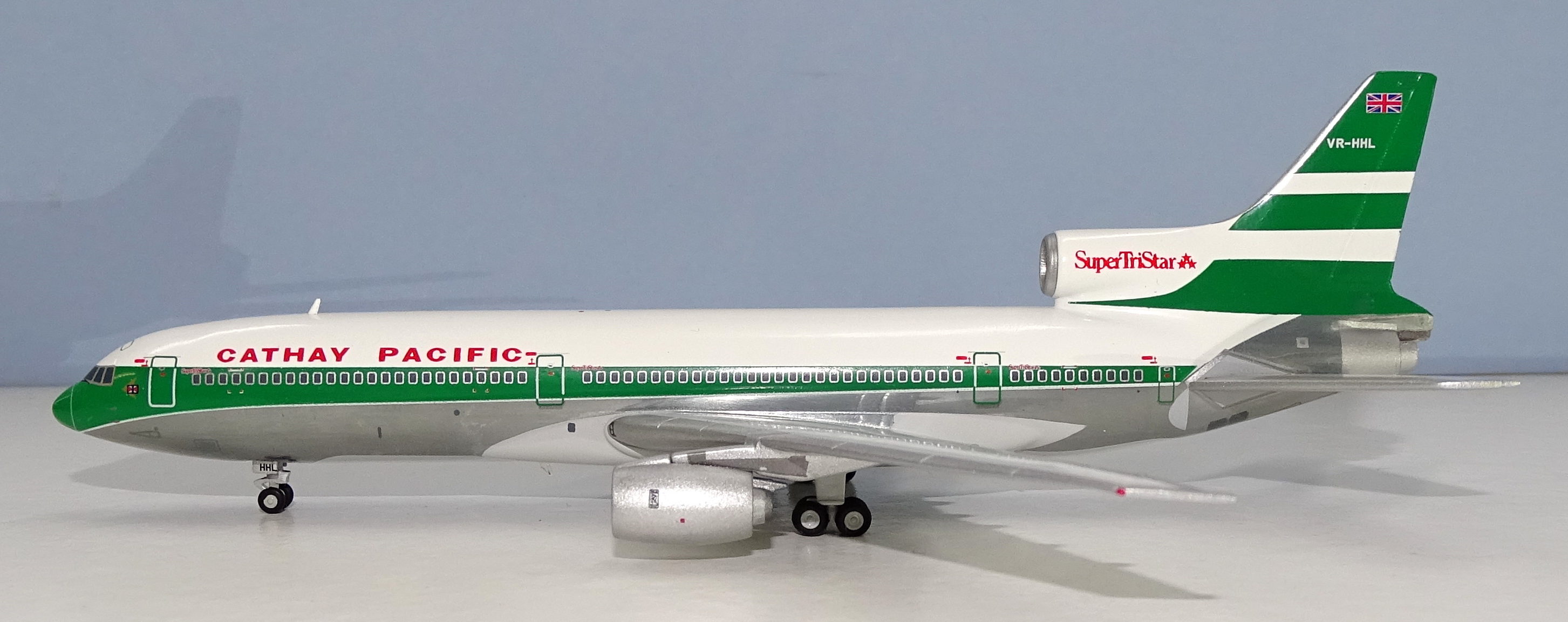
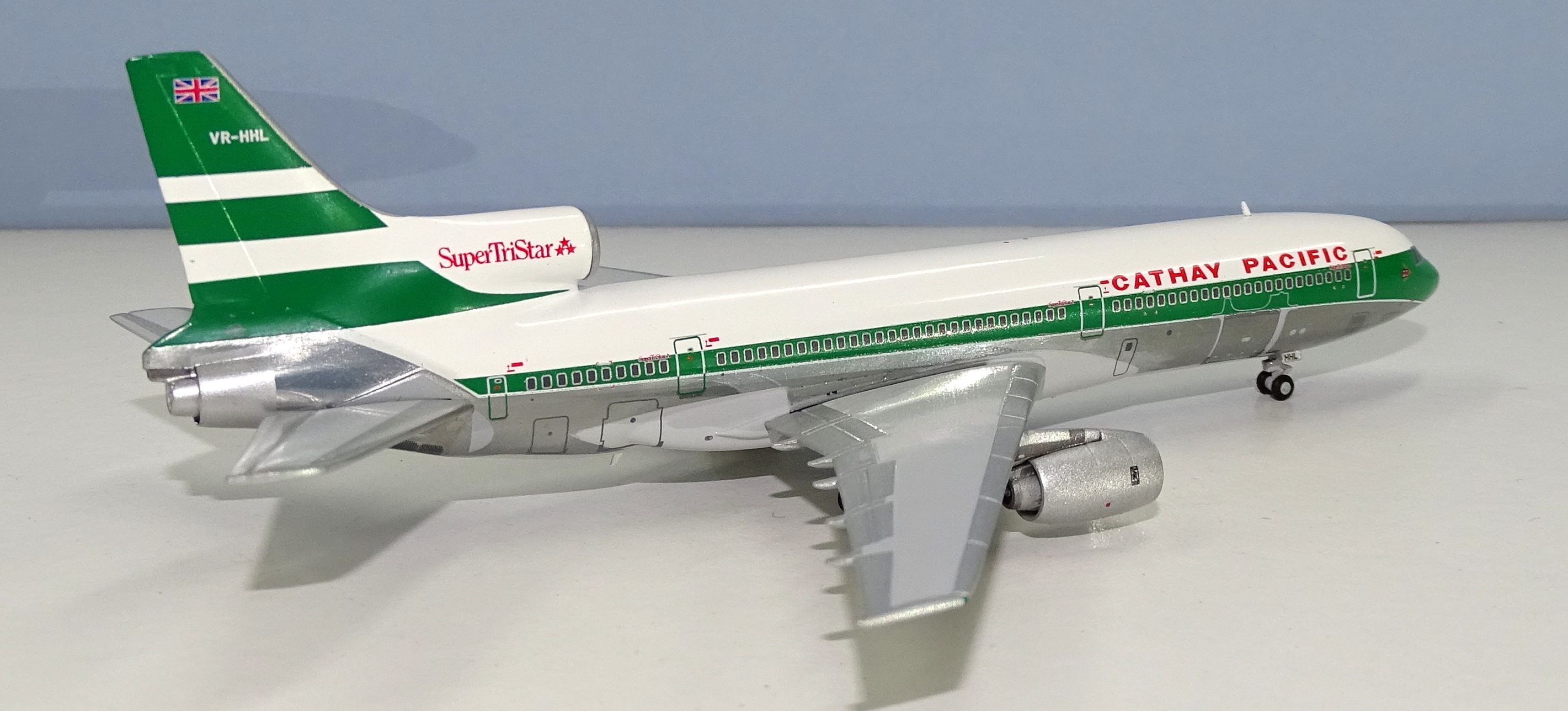


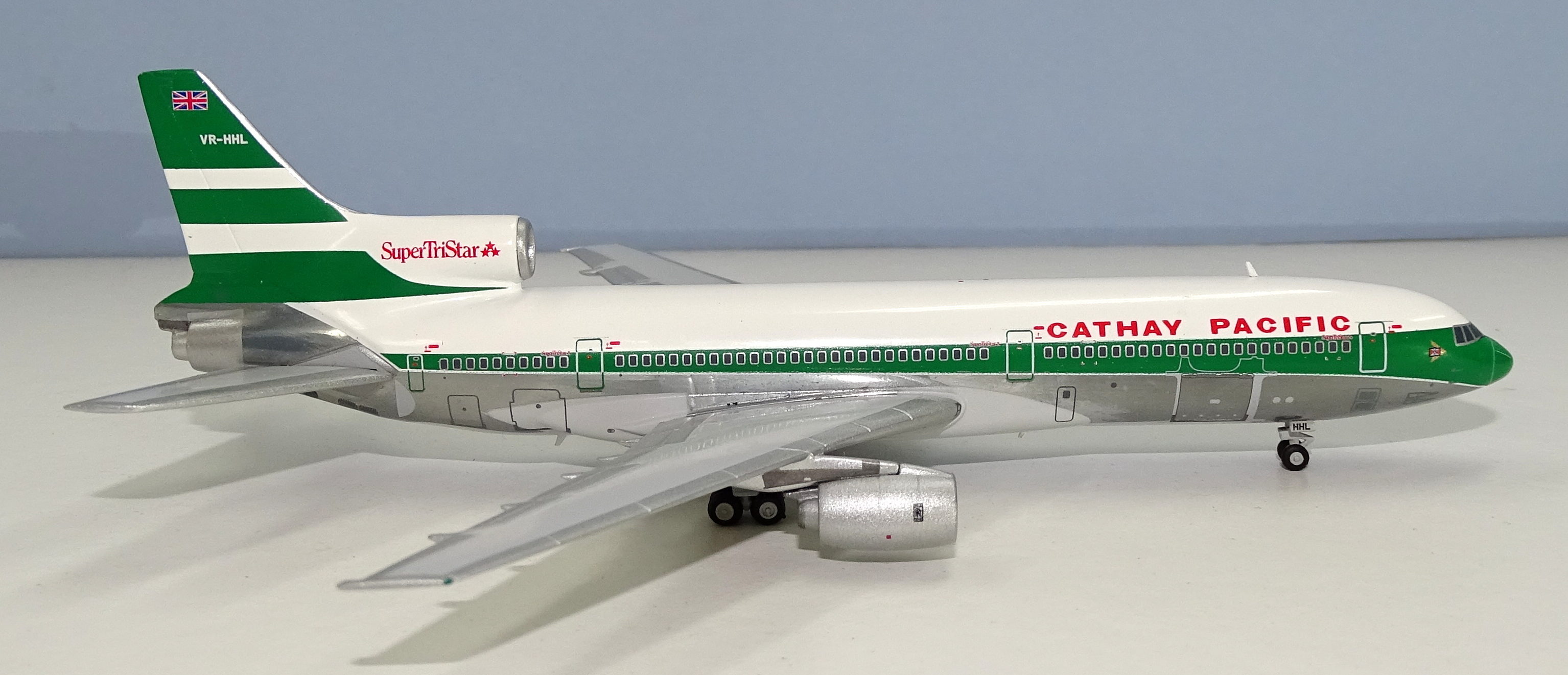
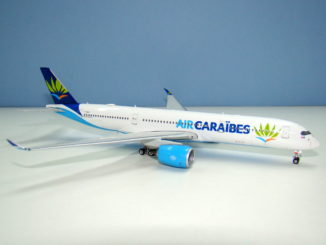
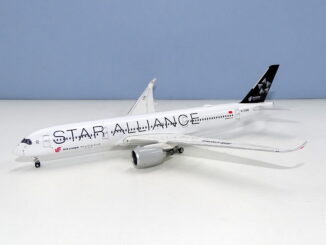
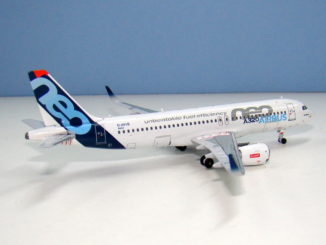
The JC Wings new Cathay Pacific L-1011. It looks like the front windshield come to a point at the bottom (like a DC-10) vs being rounded.